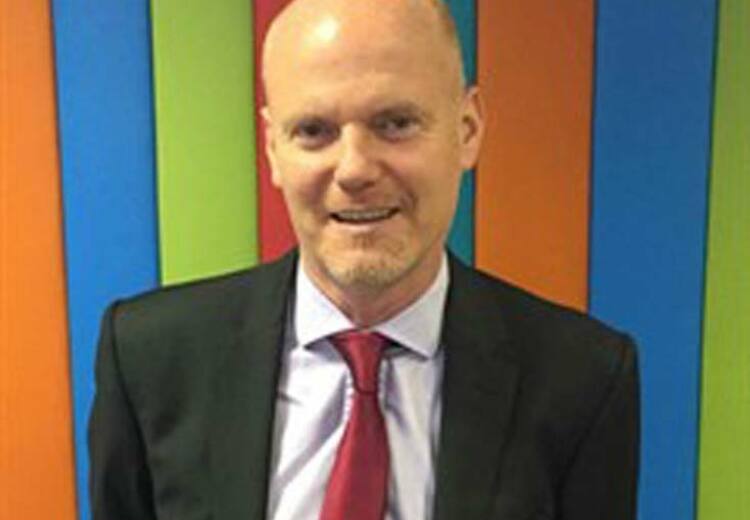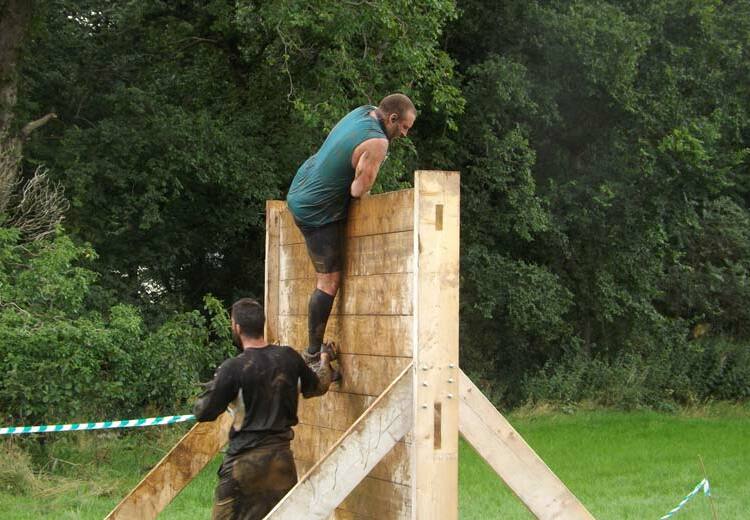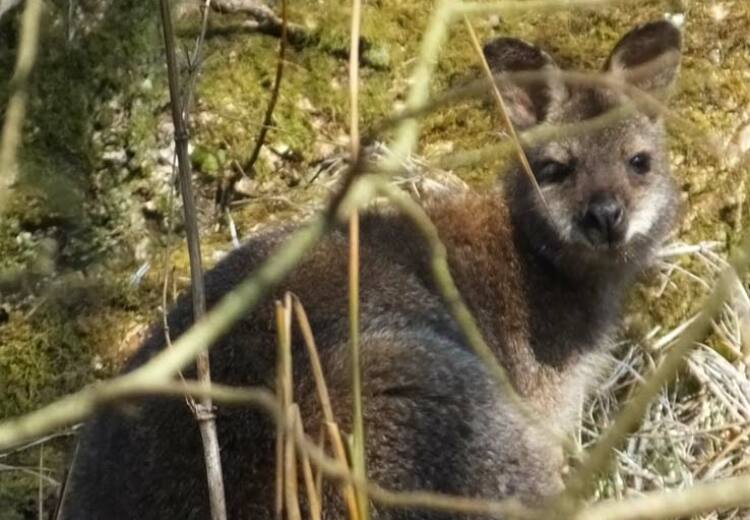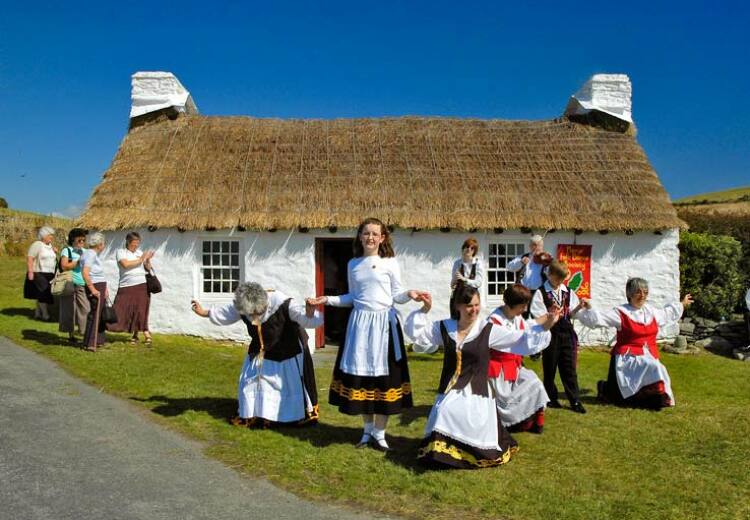An American couple visited the Island recently to visit the site of a wartime aeroplane accident which has a strong significance to them.
On 14th April 1945 a United States Army Air Force Flying Fortress bomber crashed near the Chasms whilst on a flight from Thurleigh in Bedfordshire to Northern Ireland. Although it was a fully operational bomber which had flown over enemy territory more than 80 times this was a passenger flight, carrying a number of people for a few days’ leave. Eleven people were killed in the accident, ten of whom were Air Force personnel whilst the eleventh was a woman, Emily Rea, who was a senior officer of the American Red Cross. There should have been another passenger on the flight; he was the Medical Officer of the aeroplane’s squadron, Dr Arthur Weihe. Captain Weihe was unable to take the flight and whilst the reason is unknown, one story says that the aircraft was short of a parachute so Captain Weihe went off to find one, only for the plane to be ordered to leave without him. Missing the flight on that spring day saved Arthur Weihe’s life and it was his grandson, David Janssen, who made the pilgrimage to the Island to visit the site where some of his grandfather’s friends died. David was accompanied by his wife Kristin and two friends, Mike Hanneman and Karen Dustrude.
Ivor Ramsden, Director of the Manx Aviation and Military Museum at the airport, explained:
“Through the museum’s website I was contacted by David’s wife, Kristin, who told me of the reason why they wanted to visit the Island and I was very pleased to be able to offer my help in arranging their visit to the crash site. This tragic accident way back in 1945 has resulted in the Island having been visited by several people from the USA – all family and friends of those who lost their lives. They have included the pilot’s brother and sister, his niece and her husband who, as a professor of history in California, has done a lot of research about the crash in the USA. The co-pilot’s girlfriend and best friend from his hometown married a couple of years after he was killed and, both in their 80s, they have visited the Island, as has his cousin and family. The Americans seem to honour and remember their people who were lost in wartime much more than most of us on this side of the Atlantic and it is very humbling to be able to help them in their quest for information and closure on those long-ago events.”
The aeroplane’s wreckage burnt for several hours after the crash and the following day only the tail and wingtips were recognisable. Dr Weihe and the squadron’s Commanding Officer both came to the Island to carry out the grim task of identifying the bodies and on Friday, April 20th 1945 the eleven were buried at the American military cemetery outside Cambridge at one of the largest and most moving funerals the squadron had ever seen. Many local British people, and Emily Rea's coffin was covered with flowers. The squadron was a close-knit unit and Sergeant Vince Cargile, who was a member of the regular crew of the aircraft’s pilot attended the funeral. Years later he recalled that:
"It was like losing my own family members and the service at Cambridge was heart wrenching. There was a chaplain from each faith for the service and a typical British rain falling…”
David Janssen followed his grandfather and his father into the medical profession and is now an eminent plastic surgeon in Oshkosh, Wisconsin. At the crash site he wore a wartime uniform tunic which belonged to his grandfather, one which he was quite possibly wearing when he came to the Island back in 1945.
The museum is open daily from 10am to 4.30pm and visitors can see a display which features photographs and objects from the site and which tells the story of the crash and its aftermath. Admission is free.
Photo - David Janssen, wearing his grandfather’s uniform tunic, finds a fragment of the aeroplane at the crash site.








